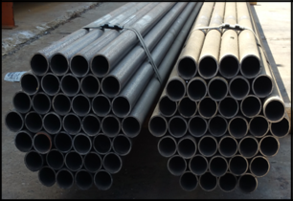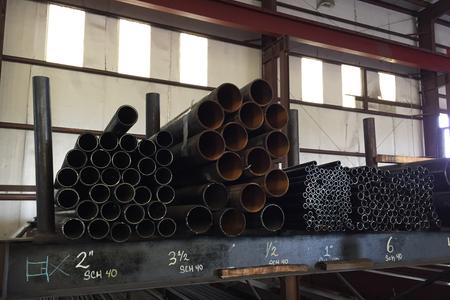
PIPE
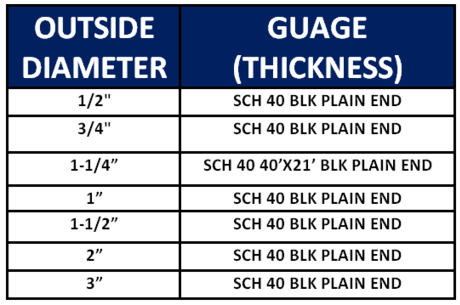
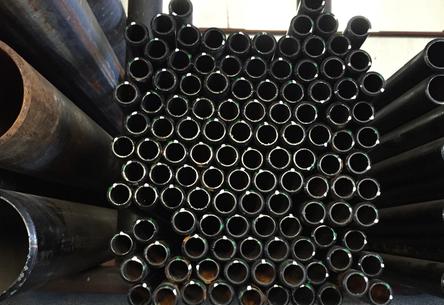
SECONDARY, USED, & REJECT PIPE
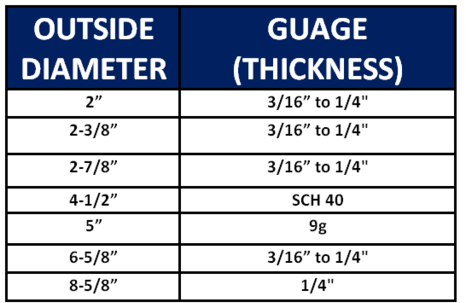
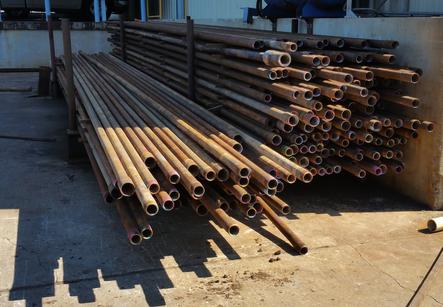
We Get the “deals” all the time on pipe and round tubing! We often have larger O.D pipe perfect for BBQ pits, or whatever you may need, so call and let us know what you need. If we do not have it we can get it for you fast! We have direct connections with large diameter pipe mills and buy their secondary and reject material.
WHAT YOU NEED TO KNOW WHEN BUYING PIPE
Odds are if you’re reading this, you are either in the market for some pipe, or in a desperate need of reading material and should really consider getting a library card. Either way my hope is that after absorbing the following script you will have ascertained a level of knowledge which will enable you to speak with authority the next time you find yourself confronted with the topic of round shaped hollow steel in a social setting, or at the very least be able to converse with a pipe salesman without fear of those embarrassing moments when the salesman lets a pipe related word you’ve never heard roll off his lips like he learned it before he could walk and you don’t have a clue what it means, but you have to nod your head up and down in a manner that not only indicates that you know exactly what he said and that you know so much about it that, should he continue to use such common terms you will be bored to the point of just pulling out your wallet and paying him whatever he wants for whatever it was you think he told you that you needed to buy in order to end the conversation.
WHICH PIPE IS RIGHT FOR YOU?
I honestly don’t know and there are a number of reasons the least not of which is that we’ve likely never met and I have no idea what you are building. That’s why you need to keep reading. The idea is that once you get to the end you’ll be able to answer the question yourself, patience my friend.
PIPE VS TUBE, WHAT’S THE DIFFERENCE?
Tough question and I figured you might ask that first so I wanted to get it out of the way up front to avoid any unneeded confusion further on. The sad fact is this that this topic is so boring it’s likely to cull all but the most seasoned of readers in less that a paragraph, so I’m moving it to the end where you can read it and a lot of unimportant “pipe stuff” later if you want. Even if you don’t want to read it I’d appreciate it if you did, because I went through the effort of writing it and for you and to not read it would be a lot like opening a present before you open the card and we all know that’s rude because our mother’s told us it was, so please do the right thing here and make your mother proud. For now I will just refer to everything as “pipe”. If you want to pretend I mean “tube” that’s ok, because for our particular ranch/hobby type applications it doesn’t really matter as you will soon find out. However, if you are reading this in hopes of getting tips on building your own airplane or time machine I suggest you skip directly to the end and strongly consider picking up an aeronautics engineering degree before buying any pipe. If you are just building a fence or other simple structure which does not have to be time warp resistant the only nomenclature you really need to know at this time is outer diameter, or “O.D.” and the wall thickness.
DIAMETER
Pretty self explanatory and a nice easy start to the long read ahead. Pipes come in different diameters. Technically there is no limit, large or small, but the average person will be able to lead a full and happy life working with pipes between .840”O.D. and 6-5/8”O.D. in size. Where it gets complicated is when someone you are trying to impress, like a new girlfriend says “Be a dear and pass me that 2” pipe Sweetie” and you look down only to see that you are surrounded by pipes which have a diameter of 2.375”O.D. Unfortunately the only way I can walk you through this most awkward situation is to send you directly to the part at the end that talks about the difference between tubes and pipes, but if you do that and skip all the rest of what I want to teach you she’ll likely put you on the spot again, so better you just excuse yourself now and read the whole thing before coming back to her.
SCHEDULES, GAUGES & THOUSANDS OF AN INCH
All three of these terms relate to the wall thickness of any given pipe. Again, boring stuff, but you need to know about if you plan to buy pipe. Just imagine the redness of your face if you were to pull an all-nighter memorizing all the gauge thicknesses only to be confronted the next day by a sales guy asking you what wall schedule of pipe you were interested in.
Four common pipe schedule examples would be, 10, 40, 80 & 160, the bigger the number the thicker the wall. Schedule 40 is the most common in smaller diameter tubes like the ones most of us will use. Unfortunately I can’t tell you how thick a schedule 40 pipe is without knowing the size of the pipe first, as the thickness of “Schedule 40” increases with the diameter of the pipe. i.e. 2” schedule 40 is .154” thick, but 6” schedule 40 is .280” thick.
Then there are gauges. When used to describe the wall thickness of pipe some common gauges are 16, 14, 12, 11, 10, 9, 8, 7, & 4. The smaller the gauge number the thicker the wall is, it’s like shotgun shells if that helps you remember.
Finally we have thousandths of an inch. These are my favorite as they don’t change when the size of the pipe changes and bigger means bigger regardless of what universe I am in.
For those of you who won’t be able to retain all this or that simply must know what the wall thickness of 1-1/2” schedule 80 pipe is in thousandths of an inch there is a chart at the end that you can refer to.
NEW, USED, PRIME, SECONDARY OR REJECT PIPE, WHICH ONE IS BEST FOR ME?
Again we have a question that requires you to get a little educated and to do some soul searching. Read about all these options and then decide which is best for your application.
USED – A few years back used pipe didn’t offer that much of a savings over new pipe and the sad fact is we all had a little more cash in our pockets back then too. Today the cost of a new pipe is as much as 40% over what it once was and used, secondary, scrap (or whatever you want to call them) pipes have not gone up that much due to a fairly depressed scrap metal market.
This growing price spread between prime and none prime pipes has more people asking fewer questions about what it is they are getting when a “great deal” comes up. We need to keep in mind that used pipes are a lot like a used cars. By the time they make it to the typical sales lot a bunch of people that know a lot more about used cars that you or I do have already passed on the opportunity to buy them. As my Dad would always say; “When you buy some thing used you’re buying someone else’s problem”. I doubt he invented that saying, but he sure did use it a lot.
Unfortunately not much used pipe was ever owned by a little old lady from Pasadena Texas and used only on Sundays to pump 100% synthetic oil out of the small well in her rose garden. Here in Texas and Oklahoma most of it was used to guide drill rod, or as some call it sucker rod down a twisted gnarly path pointed roughly in the direction of Satan’s lair, so its not much of a stretch to say that most used pipe has literally been to hell and back by the time it gets offered to you.
The constant wearing and banging of the harder drill rod against the inside of the pipe eventually wears the walls down to the thickness of paper and the saltwater and highly corrosive hydrogen sulfide gas that constantly flows within the pipe ensures that the steel is permanently contaminated with chemicals which will relentlessly continue to eat away at the pipe until such time as they’ve made their way through the wall. Think of salt particles as the termites of the steel world.
Pipe may be pulled from the ground and tested a few times before it is offered to the public. It is typically checked by means of hydro-testing it or by electronic-magnetic inspection. The hydro-testing will cause blow outs, or bulges where the wall is too thin. The EMI tested pipes fall into four grades: WHITE band means up to 12% wall loss, YELLOW band means up to 15% wall loss, BLUE band means between 16% up to 30% wall loss, and RED band means over 30% wall loss. The RED band is what is usually on the market for structural use, since the white, yellow and blue can still be used in oil wells. NOTE: often times the red band is not even painted on the pipe since it is the lowest grade and will not be used for its original purpose again.
So how does this affect you as a pipe buyer? Well I guess if you’re building a structure for your brother-in-law already knowing that your sister is planning to dump him in a few months there would be no harm in using some used pipe for the project, especially if he’s paying in cash as soon as you finish up, but if you’re planning to build a fence around the property that you are hoping your kids will one day own and cherish you may want to think twice as your kids may just end up wanting to sell the place and buy condos. Unloading the joint with a crumbling fence out front is not going to be easy for them. Is that really how you what to be remembered, as the guy that put up the salt saturated pipe fence that rusted out and fell down? I’m just saying.
Seriously, no amount of cleaning or paint can stop a contaminated pipe from rusting through eventually. Nor can you tell visually from the outside how much wall thickness is left on a pipe. What looks like a smooth clean stick of heavy pipe may be as thin as your fingernail in various spots and for reasons I’ll never understand the worst pipes always seem to end up in the middle of the bundles where they can’t be seen until after your check has cleared. Think long and hard about all this before you go with used pipe.
NEW PRIME PIPE – If you can afford new prime pipe buy it. Even if you need to buy something a little thinner than you might wish you could afford, it will almost always last longer than used pipe. It’s made to stringent specifications and usually available with MTR’s (Mill Test Reports) which show all the chemistry, hardness, strength and such for that particular piece of pipe. Normally this is what the people building structures such as oil rigs, trailers, billboards, public buildings and whatever else might have liability issues. If you want to sleep well at night this is the stuff to buy.
SECONDARY PIPE– This is a byproduct of prime pipe. Typically 2% of all prime pipe production falls into this category. The reason for the “less than prime” classification might simply be that the pipe was cut a little short, or that there was some other minor detail which prevented it from being worthy of a prime rating. This material is highly coveted by fab shops which utilize shorter lengths of material and do not have to provide MTR’s for their products.
MILL REJECT PIPE – This is a general term that covers major production defects such as bowed, split or un-welded seams, blow outs, short random lengths, mid-welds, and possibly other defects. This material can also be sorted and cut to serve the same purpose as prime materials. “Beauty is in the eye of the beholder” Whoever first said that was probably trying to explain to his wife why he’d just arrived home with a truck full of reject pipe. He probably also saved enough money building his fence that he was able to take his wife on a cruise the following winter and no one was the wiser. My point is that if you can work around the shortcomings of the sub- prime pipes you can save a lot of money and not have to be concerned with the demons which live inside the typical used oil field pipe.
NON-TYPICAL MILL REJECT PIPES – These are my personal favorite for custom jobs. In the farm & ranch community the most common sizes used for fencing are 2”(2.375”O.D.) and 2-1/2”(2.875”O.D.) pipe. Typically these come in a .140” or a .180” wall and work great for most fences and livestock containment, but they are also the most coveted sizes and that keeps the prices up higher than they should be. Non-typical sizes typically sell for less due to their sight differences. A couple non-typical examples would be 2.00”O.D. and 2.75”O.D. pipe. Besides being nearly identical to the more common 2.375 and 2.875 pipes the wall thicknesses of these sizes is usually heavier than the walls of their more common cousins, so you are actually getting a stronger, longer lasting pipe as well. Your cows won’t be able to tell the difference but your wallet sure will.
Ok, you’ve made it this far, you know that gauges, schedules and decimals can cause headaches and you know that used pipes, like women can be pretty on the outside and ugly on the inside, but you still don’t know what thickness of pipe you need to keep your chickens from kicking down your fence and letting all the alpacas get away. For liability reasons I can’t tell you which pipe to use for your project, I’m not an engineer and I have no idea if you’re building a bomb shelter, or an all metal outhouse, the latter of which I would not recommend as letting one rip in the confines of a small metal enclosure could cause permanent hearing damage and short term embarrassment, but I can tell you what I’ve found works best for a few common aggie type projects.
Starting from thin to thick, and what I would recommend with these thicknesses:
16 gauge .059” average thickness – good for light panels and gates
14 gauge .074” average thickness – good for light panels and gates and top rail on fencing IF not holding livestock.
12 gauge .104” average thickness – good for top rail and rails in light pressure horse pastures.
11 gauge .119” average thickness – good for all rails in light pressure pastures and good for posts in light pressure perimeter fencing. Too light for pens with moderate or heavy pressure animals.
10 gauge .134” average thickness – good for top rails and rails in all applications. Good for posts in all but heavy pressure pens.
8 gauge .164” average thickness – probably too heavy for railing, as it gets to expensive. Best for posts in most any situation and heavy duty pens.
7 gauge .179” average thickness – great for posts.
4 gauge .224” average thickness – great for posts.
1/4″ thick .250” average thickness – great for posts.
See the table below for more information
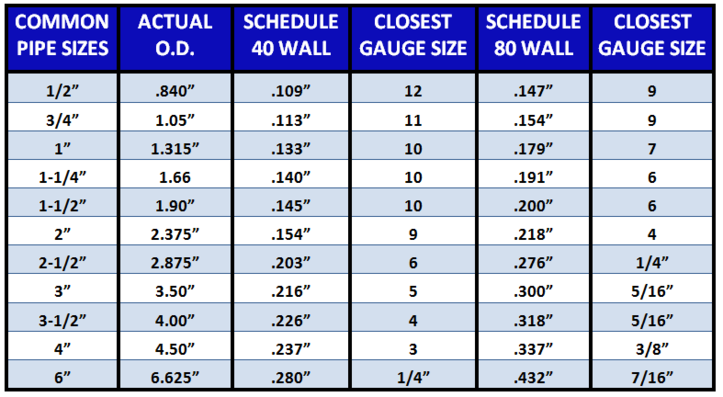
Now here’s some other information including the difference between pipe and tube, enjoy.
The term “Steel Pipe” usually refers to materials that are meant to conduct, convey, or transport liquids, or gases from point A to point B, often at substantial pressures. Steel pipe is usually referenced to by its “nominal” size which is typically the internal diameter of the pipe, or “I.D. The thickness or “wall” of a pipe is usually referred to as its schedule.
A common example in our industry would be a 2” schedule 40 Pipe. This particular pipe has an outer diameter of about 2.375”, a nominal wall thickness of about .154” and a true I.D. of about .206”. However, an extra strength 2” schedule 80 pipe would have the same outer diameter, but the nominal wall thickness would be about .218” and the true I.D. would be about 1.93”.
This is just one example and it has nothing to do with any other size of pipe as the wall thickness that applies to any given schedule increases with the diameter of the pipe as shown in the reference chart above.
There are a number of ways to make pipes. The most common method is to cold form them on a rolling machine and then weld the formed circle together by welding the edges together with electronic resistance welding, or ERW. Using this method usually means that the resulting seam must be further worked by means of an air hammer, or pulling the pipe over a mandrel to smooth it out. Sometimes a large diameter pipe is cold formed and then hot reduced to a smaller size by heating it and pulling it over a set of dies. Another method is to make a seamless pipe or tube by pushing a heated steel billet over a form. This is usually the strongest and most exact way to make a pipe, but it is also the most expensive. Once the required O.D. of a pipe exceeds 26” it usually has to be spiral formed and welded not unlike the way the internal tube of a roll of paper towels is formed.
Still with me? Good! Now let’s talk about tubes for a moment. When referring to tubes the typical references are outer diameter, or O.D. and wall thickness. Most of the tubes we deal with are known as mechanical tubing, or hollow structural sections, or HSS tubes and they too can be manufactured in a number of ways. There are also other specialized types such as hydraulic tubes.
Pretty much every type of tube and pipe out there was manufactured to some sort of specification or standard such as those dictated by organizations like the API (American Petroleum Institute) or ASTM (American Society for Testing Materials) The different categories listed by these organizations is almost endless if you should ever want to look into it, but fortunately most of you are likely looking to build a fence which as far as I know is not a listed as a subsection in any category of tube or pipe.
If you wish to further lull yourself into a deep sleep a student of the University of Massachusetts in 2007 conducted a study on the physical differences between schedule 40 steel pipe and similar structural steel tube only to discover that after 20 pages of informative results and a year worth of tuition fees that the differences between the two in impact applications such as bumpers, roll bars and deer guards the differences between the two were negligible.
This concludes our lesson on pipe buying. Please note that you get what you pay for and this was free. I am not responsible for the use, misuse, or abuse of any pipes or tubes and will not be responsible for any damages or injuries that may arise from your action, reaction, or distraction during, or after the time you spent reading this article.
